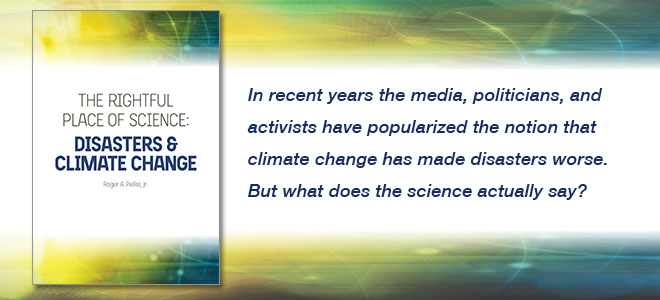#1 TRUTH: Approximately 98% of potential sea level rise (SLR) is stored in the ice sheets and glaciers of Antarctica and Greenland.
 |
| You can demonstrate this phenomenon with a simple experiment. With ice cubes floating in a glass, mark the level. When the ice has melted, the level will be unchanged. You need to add more ice cubes to the glass to change the level of water. |
LIE: The rapid melting of the polar sea ice around the North Pole is related to rising sea level.
EXPLANATION: Only the melting of ice on land can cause sea level to rise. The melting of floating ice has no effect. You can demonstrate this phenomenon with a simple experiment. With ice cubes floating in a glass, mark the level. When the ice has melted, the level will be unchanged. You need to add more ice cubes to the glass to change the level of water. That is what happens as the ice sheets on land melt and flow into the sea. Melting all the ice on Antarctica would create about 185 feet (56 m) of higher sea level globally. Melting all the ice on Greenland would cause about 24 feet (7 m). Even at the present accelerating rates of melting it will take many centuries for all the ice to melt, but remember just 1 to 2 feet of sea level rise is devastating to coastal communities and all the signs point to that happening within decades.

#2. TRUTH: Rising sea level is now unstoppable this century. We can (and should) try to slow the rate of rise, but have passed a tipping point.
LIE: We can stop rising sea level by switching to renewable energy, promoting bicycling, recycling, or other very good environmental efforts.
EXPLANATION: The oceans have been warmed more than one and a half degrees F (almost one degree C) over the last century. This was caused by carbon dioxide and other greenhouse gases trapping heat, similar to the way that a sheet of glass traps heat in a greenhouse. That excess heat will cause a lot of ice to melt, raising global sea level. This new reality demands that we simultaneously work to slow the warming, AND begin adaptation for certain sea level rise while there is still time.

#3. TRUTH: Preparing for rising sea level is quite different than being resilient to flooding from big storms and heavy rainfall.
LIE: Planning for rising sea level is the same as being more “resilient” to future storms.
EXPLANATION: Even the flooding from massive storms like Hurricanes Katrina or Sandy, recedes in hours making it possible to rebuild and recover. Rising sea level requires a different design approach because it is fundamentally permanent flooding. Higher sea levels will last for centuries, and this new base water level will compound the effects from storm surges and extreme tides, causing even more damage.

#4 TRUTH: Sea level rise can vary greatly in different locations.
LIE: Sea level rise will have similar effects everywhere.
Explanation: The primary reason that SLR varies from place to place, is that land is moving slightly down or up, affecting the relative ocean height. For example, since 1880, sea level is only 4 inches higher in Los Angeles, but 46 inches higher in New Orleans. The difference is that Los Angeles has been uplifted a few inches, while New Orleans has subsided approximately 38 inches. Variations can also be caused by changing ocean currents, local topography, and redistribution of the Earth’s mass as the polar ice melts. This is why communities and businesses need to do sea level rise vulnerability assessments specific for their location.

#5 TRUTH: We cannot precisely predict sea level far into the future.
LIE: The models for sea level rise are completely accurate.
Explanation: The models of climate change, melting ice, and rising sea level are getting better and better and now are quite sophisticated. These newer models continue to raise the upper limit for sea level. Most recently the NOAA report in January 2017 added a new upper bound for SLR this century of up to eight feet (2.5 m). The lower limit is still described as one or two feet. However, even this report is not a accurate description of what will realistically happen. See my recent blog post
The problem is that glaciers globally and the two major ice sheets on Antarctica and Greenland may collapse rather suddenly and unpredictably. They behave somewhat like earthquakes, avalanches, or tsunamis, which are still not possible to forecast with any precision. With earthquakes we have enough record of seismic events to make some statistical forecasts, such as there is a 10% chance of a category 8 earthquake in the San Francisco Bay area in the next fifty years, but hardly anything precise in terms of where and when the next big one will occur.
Historically there is evidence that sudden ice sheet collapse causes relatively sudden changes in sea level. The geologic record is clear that sea level can rise at least a foot per decade, a rate that would have catastrophic effect globally. The models of rising sea level generally omit any such catastrophic collapse because of the inability to predict exactly when it will happen. Thus even the latest curves from that NOAA report shown just below, are smooth — omitting any abrupt change. It is very important that we continue to improve the models based on the melting in the Arctic and Antarctica, while at the same time realizing that the models will never be able to predict the big sudden collapses of the ice sheets that will result in the rapid sea level rise.https://www.johnenglander.net/sea-level-rise-blog/top-10-lies-sea-level-rise-part-1/




 Meteorologist Anthony Watts documented the inaccuracy of old weather station data used by NASA on his
Meteorologist Anthony Watts documented the inaccuracy of old weather station data used by NASA on his
